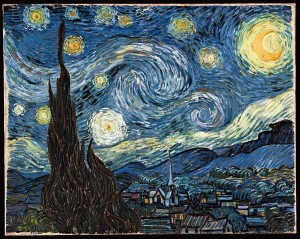Art and the subversion of money-values
I am extremely fortunate to be in a city (St. Louis) where a group of dedicated civic leaders arranged for the opening of a new public charter school for the arts opened last year. It is called Grand Center Arts Academy; it has three grade levels this year--sixth through eighth grades--and it will add one grade level each year, eventually including grades six through twelve. How unusual and wonderful that one can find such a publicly-funded arts oasis at a time when so many schools are cutting their arts classes in order to concentrate on "essentials."
 In the September/October 2011 edition of Orion Magazine, Jay Griffiths is tired of defending the arts. Why defend them any longer, when you can use the topic of public funding of the arts to slash at the deep rotten core of the belief that money is the measure of all things? Here's an excerpt from what Griffiths has to say in his excellent short article, titled "The Exile of the Arts" (This article does not appear to be available online at this time).
In the September/October 2011 edition of Orion Magazine, Jay Griffiths is tired of defending the arts. Why defend them any longer, when you can use the topic of public funding of the arts to slash at the deep rotten core of the belief that money is the measure of all things? Here's an excerpt from what Griffiths has to say in his excellent short article, titled "The Exile of the Arts" (This article does not appear to be available online at this time).
Disregarding art's transcendent value, modern states ask the arts to justify themselves in commercial terms, money the only measure to calculate a simile, to price the melody of a violin, and to calibrate the value of transformation. A phoenix must write its own cost-benefit analysis. While art tells multiple stories, knows the plural values of beauty, dream, and meaning, money tells a monstrosity. Money should never be the judge of art, but its servant: funding it, supporting it, aiding it. Perhaps one of the reasons for the hostility against the arts today is precisely that they are implacable witnesses against this terrible lie of our times: that money is the measure of all. Art refutes this lie, disentangles "money" from "values," and argues with its deepest authority that there is another sky, intimate and boundless, open to all, where the poet can tow a star across the liquid river of night, like a child with a toy boat on a string.


